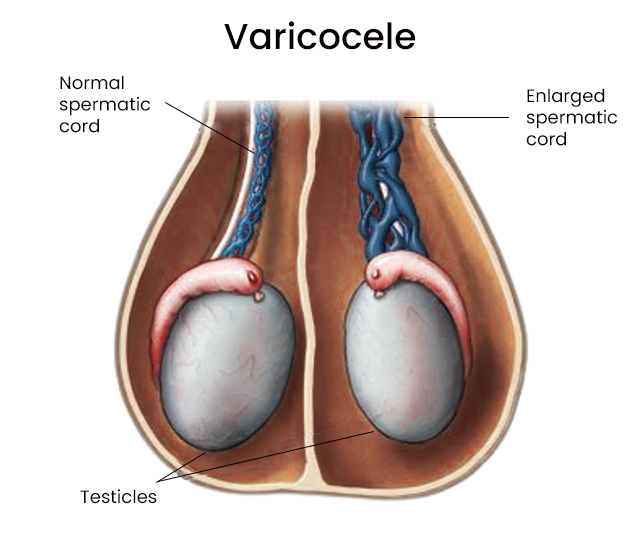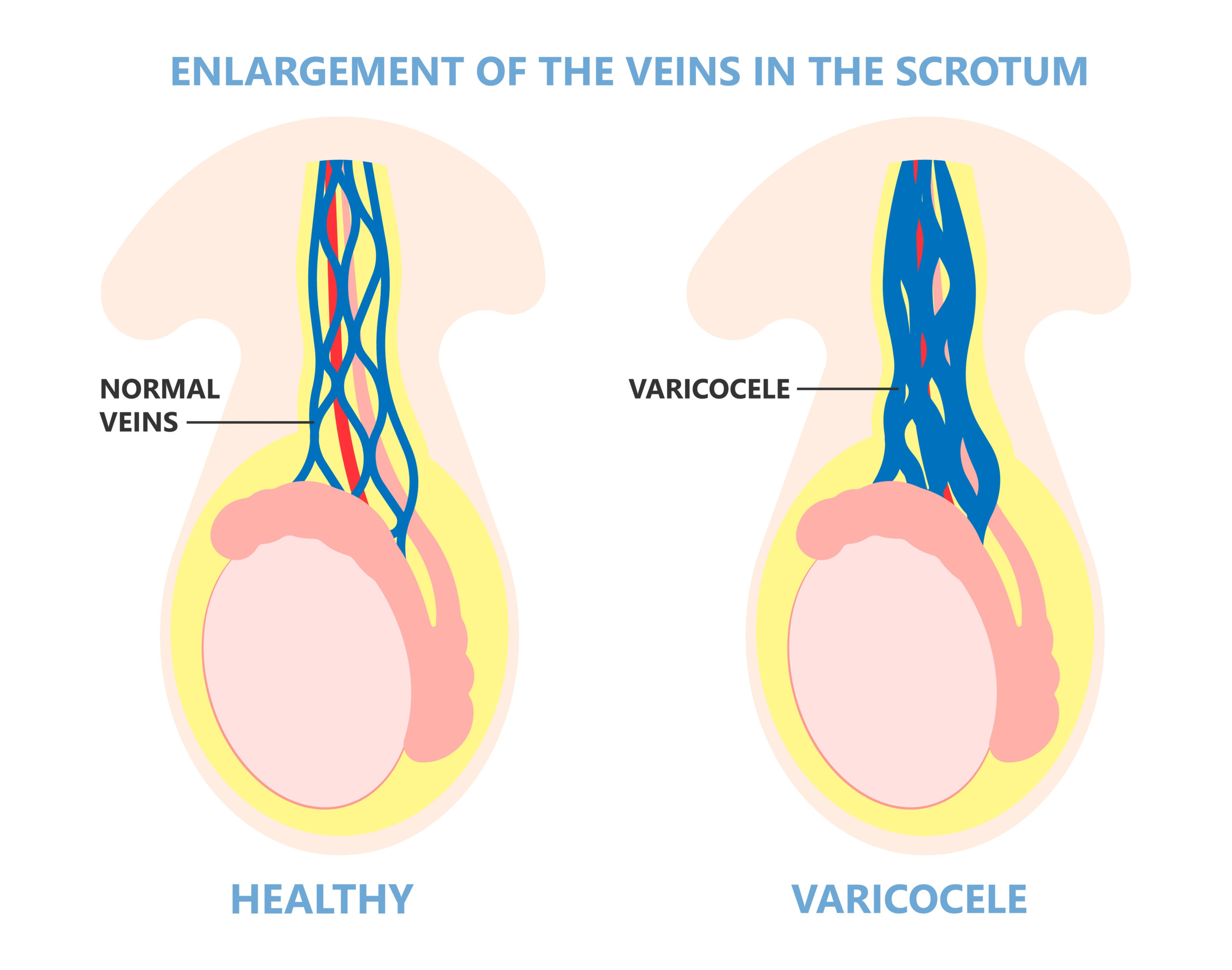Varicocele is a term that may be unfamiliar to many, yet it is one of the most common conditions affecting male reproductive health. Understanding and treating varicocele is essential, especially for men dealing with infertility issues or discomfort. In this article, we will delve into what varicocele is, its symptoms, causes, diagnosis, and treatment options, while repeatedly emphasizing the importance of understanding and treating varicocele in order to promote male reproductive health.
What is Varicocele?
Varicocele refers to the enlargement of veins within the scrotum, much like varicose veins that can occur in the legs. Understanding and treating varicocele involves recognizing that these enlarged veins can lead to reduced sperm production and quality, ultimately affecting fertility. Varicoceles typically develop during puberty and can affect up to 15% of the male population. The condition is most commonly found on the left side of the scrotum due to the anatomical differences in venous drainage.

Symptoms of Varicocele
Many men with varicocele may not experience noticeable symptoms. However, some individuals report discomfort or pain, especially after prolonged standing or physical activity. Understanding and treating varicocele can alleviate these symptoms. Common signs may include:
- Dull, aching pain in the scrotum
- Visible enlarged veins in the scrotum
- A feeling of heaviness in the affected testicle
- Changes in the size of the testicles, often resulting in one being smaller than the other
Recognizing these symptoms is crucial, and men experiencing such issues should seek medical advice, especially if they are concerned about fertility.
Causes of Varicocele
Understanding and treating varicocele requires an awareness of its causes. The primary cause of varicocele is the malfunction of the valves within the veins of the spermatic cord, which can lead to increased blood pooling. Other contributing factors may include anatomical abnormalities, hormonal influences, or increased pressure in the abdomen. The exact cause may not always be identifiable, but understanding these factors is pivotal in addressing the condition.
Diagnosis of Varicocele
Diagnosing varicocele involves a physical examination and possibly an ultrasound. During a physical exam, healthcare providers will look for enlarged veins in the scrotum and any associated symptoms. An ultrasound may be used to assess blood flow and the size of the affected veins. Understanding and treating varicocele effectively hinges on accurate diagnosis, allowing healthcare providers to determine the best course of action for each individual.

Read More:Sexual performance issues
Treatment Options for Varicocele
When it comes to treating varicocele, it is necessary to weigh the potential benefits against the risks involved in any surgical intervention. In cases where varicocele causes pain, infertility, or other complications, treatment may be warranted. Understanding and treating varicocele can include several options:
1. Observation
In many cases, if the varicocele is asymptomatic and not affecting fertility, healthcare providers may recommend a “watch and wait” approach. Regular monitoring can ensure that the condition does not worsen.
2. Medication
While no medications can directly treat varicocele, pain relievers may be prescribed to alleviate discomfort. However, understanding the limitations of medication is crucial for individuals looking to address the condition effectively.
3. Surgical Intervention
If treatment is necessary, several surgical options are available:
- Open Surgery: This procedure involves making an incision in the groin to access and tie off the problematic veins.
- Laparoscopic Surgery: A minimally invasive option that uses small incisions and a camera to guide the procedure.
- Embolization: A non-surgical procedure that involves blocking the blood flow to the affected veins, thus reducing blood pooling.
Understanding and treating varicocele often leads doctors to recommend surgical options in cases where symptoms are severe or fertility issues arise.
The Role of ENDOPEAK in Treating Varicocele
Patients seeking innovative solutions for treating varicocele may benefit from products like ENDOPEAK. Designed to assist in surgical interventions and treatments, ENDOPEAK provides advanced tools and devices that enhance the precision of surgical techniques. Understanding and treating varicocele through the use of ENDOPEAK can offer improved outcomes for patients undergoing surgical correction of this condition.
Recovery and Follow-Up Care
Post-treatment, recovery protocols often vary based on the procedure performed. Most patients experience minimal discomfort and can return to their daily activities within a few days to weeks. Understanding and treating varicocele is further emphasized in the recovery phase, as proper follow-up care is crucial to monitor healing and address any complications. Regular visits to a healthcare provider allow for assessments of sperm quality and overall reproductive health.
Impact on Fertility
Understanding and treating varicocele is particularly important in the context of male fertility. Studies indicate that varicocele may be responsible for up to 40% of male infertility cases. Men diagnosed with varicocele and seeking to start a family should consult a specialist to explore treatment options. Additionally, understanding the interplay between varicocele and fertility can lead to targeted interventions and better outcomes.

Lifestyle Changes and Supportive Measures
In addition to medical treatments, lifestyle changes can support men dealing with varicocele. Understanding and treating varicocele involves a holistic approach that includes:
- Healthy Diet: Maintaining a balanced diet rich in antioxidants can support reproductive health.
- Regular Exercise: Incorporating physical activity can improve circulation and overall well-being.
- Avoiding Tight Clothing: Loose-fitting underwear may alleviate discomfort by reducing heat and pressure in the scrotal area.
- Managing Stress: Stress can adversely affect hormonal balance, so implementing stress-reduction techniques is beneficial.
Support from family and friends can also play a crucial role in the emotional well-being of men dealing with varicocele.
In conclusion, understanding and treating varicocele is vital for male reproductive health, particularly for those experiencing infertility or discomfort associated with the condition. By recognizing the symptoms, causes, diagnosis, and available treatment options, individuals can take proactive steps towards managing their health. Innovative products like ENDOPEAK offer valuable solutions for surgical interventions, enhancing the potential for successful treatment outcomes. As we continue to raise awareness around varicocele, understanding and treating this condition will ultimately lead to improved quality of life and reproductive success for many men.

